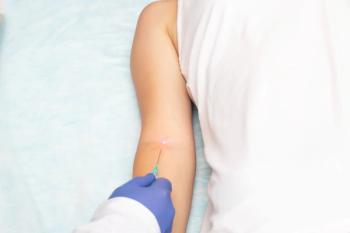
Clinical Considerations for Medical Cannabis in Oncology
Key Takeaways
- Cannabis remains a DEA Schedule 1 drug, complicating its use in oncology despite its investigational potential.
- Epidiolex is FDA-approved for epilepsy, showcasing cannabis's therapeutic possibilities beyond oncology.
In a lecture at the virtual Community Oncology Conference 2020, Christine Roussel discussed some clinical considerations for the use of medical cannabis in patients with cancer.
This article was updated July 20, 2020.
The medical cannabis industry in the United States is growing, especially in terms of its investigational uses in the field of oncology. In a lecture at the virtual Community Oncology Conference 2020, hosted by the Community Oncology Alliance (COA), Christine Roussel, PharmD, BCOP, the director of pharmacy at Doylestown Hospital, discussed some clinical considerations for the use of medical cannabis in patients with cancer.1
Roussel started off by explaining that cannabis is currently a DEA Schedule 1 drug with no FDA-approved use for cancer treatment, which means its application in the oncology field has to remain investigational. Furthermore, due to its high potential for abuse, any attempt by pharmaceutical companies to develop cannabis must go through triple agency approvals by the National Institute of Drug Abuse, DEA, and FDA.1
Currently, a cannabidiol (CBD) product (Epidiolex, GW Research) is FDA-approved for treatment of 2 rare and severe forms of epilepsy: Lennox-Gastaut syndrome, and Dravet syndrome. This approval is the first by the FDA for a medication that contains a purified drug substance derived from marijuana.2
Yet, since the 1990s, the US government has also owned a patent for the use of cannabis for antioxidants and neuroprotectants. In discussions regarding this patent, researchers have been able to highlight the neuroprotective properties cannabis provides.1
“Additionally, the US government actually grows cannabis, and has been shipping it to patients,” Rousell said during her lecture. “One such patient gets about 300 marijuana cigarettes every month, and has been for the past 30 years, compliments of US tax dollars.”1
This helps to highlight the complicated relationship the US government has had with medical cannabis over the past few decades, which can lead to confusing messaging for consumers regarding its appropriate use and applications, according to Rousell.1
This lack of clarity has also been reflected in some educational content regarding the different types of neurotransmitters that exist in our body.
Roussel first explained how amino-acid based neurotransmitters operate. They work by sending signals from the synaptic neuron to the post synaptic neuron, which are then synthesized, stored in vesticles, and sent across the synaptic cleft to bind to a protein-coupled receptor and allow for downstream signaling.1
“This is the way that glutamate and gamma-aminobutyric acid work, and all of the other neurotransmitters that we classically think about. But what we didn’t really learn about in school was the endocannabinoid system, which is a retrograde signaling system,” Roussel explained. “So, when the post-synaptic neuron has had enough signaling, it’s time to say ‘hey, stop it,’ it’ll then synthesize a chemical on-demand. But these chemicals are a little bit different, they basically turn off or turn down the faucet on neurotransmitters.”1
Roussel also highlighted that the problem that currently stands in the way of cannabis being fully embraced within traditional medicine is that it is a heterogenous mix, which means there is not consistency amongst plant material.1
Within that plant material, there are 2 chemicals that get the most attention: tetrahydrocannabinol (THC) and cannabidiol (CBD).1
THC is the primary molecule that supports pain relief, sleep induction, euphoria, and muscle relaxation. In terms of oncology, these benefits can effectively support patients undergoing cancer treatment. Furthermore, THC is an antiemetic and an appetite stimulant, which means it can help patients to improve mealtime socialization by allowing them to eat without being bothered by smells that could trigger nausea.1
CBD has different effects in its ability to support patients with cancer such as anti-nausea and anti-inflammatory effects, the latter of which can provide pain relief. However, CBD should be given with caution to patients with cancer due to its ability to inhibit hunger and cause diarrhea, both of which can be particularly problematic for patients undergoing treatment.1
“CBD can have adverse effects that can be clinically significant. I had a patient who came up to me at an event and was asking about the dose of CBD specifically for breast cancer. She had been a patient who was metastatic but not yet on chemotherapy or anti-hormonals, and she had been taking 500 mg of CBD a day. After asking her about her side effects, she explained that she had lost 40 pounds in the last 8 months without trying. CBD can suppress your appetite, and it is dose dependent in its process for doing that,” Roussel said during her lecture.1
In this way, clarity regarding dosing and the dominance of THC or CBD in medical cannabis is incredibly important when deciding how to treat patients with cancer.1
“Potency is an issue, and it’s a dangerous thing for patients who are naïve, cachectic, or have compromised organ function. The concentration of these products has been escalating rapidly, and right now, as mentioned, they are federally illegal in many states.” Roussel said.1
She explained further that these issues will continue to require clinical attention in the consideration of how to appropriately approach treating patients with cancer with medical cannabis.1
REFERENCE
- Roussel C. Medical Cannabis: Clinical Considerations in Oncology. In: Community Oncology Conference 2020; April 23-24, 2020.
- Barrett J. FDA Approves Groundbreaking Drug for Treating Rare, Severe Forms of Epilepsy. Pharmacy Times. https://www.pharmacytimes.com/news/fda-approves-groundbreaking-drug-for-treating-rare-severe-forms-of-epilepsy. Published June 25, 2018. Accessed July 20, 2020.
Newsletter
Stay informed on drug updates, treatment guidelines, and pharmacy practice trends—subscribe to Pharmacy Times for weekly clinical insights.















































































































































































































